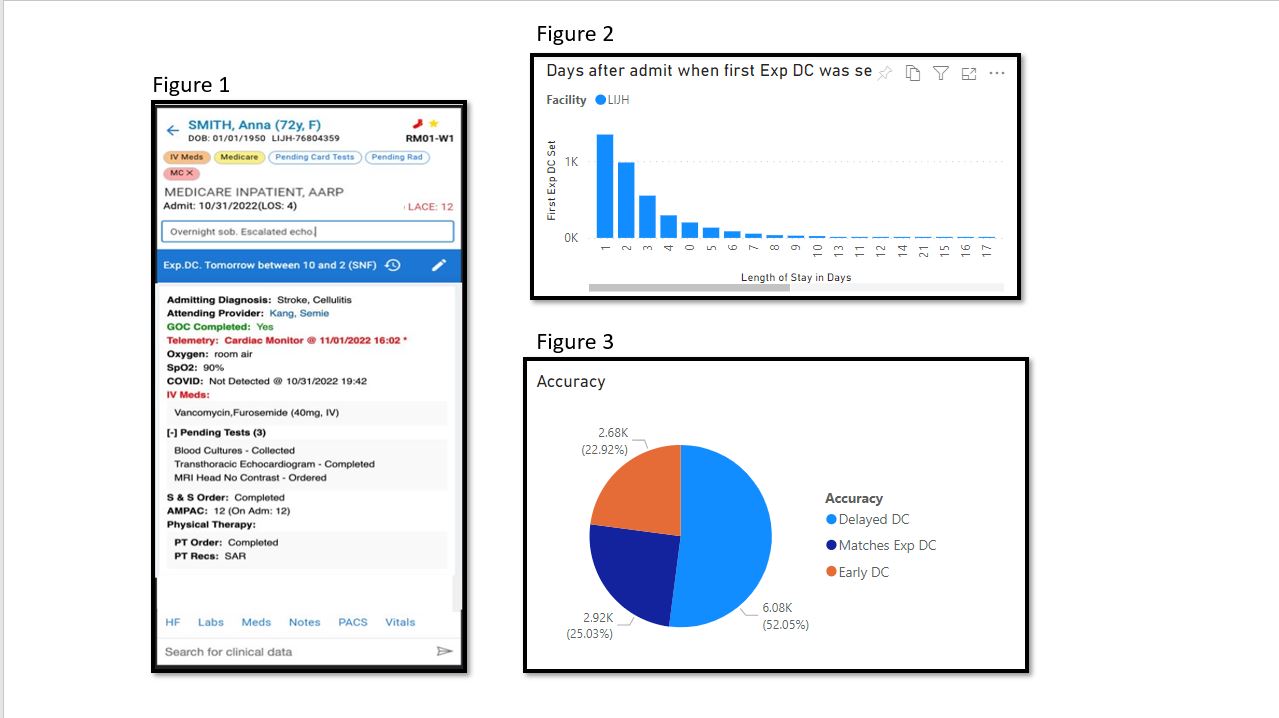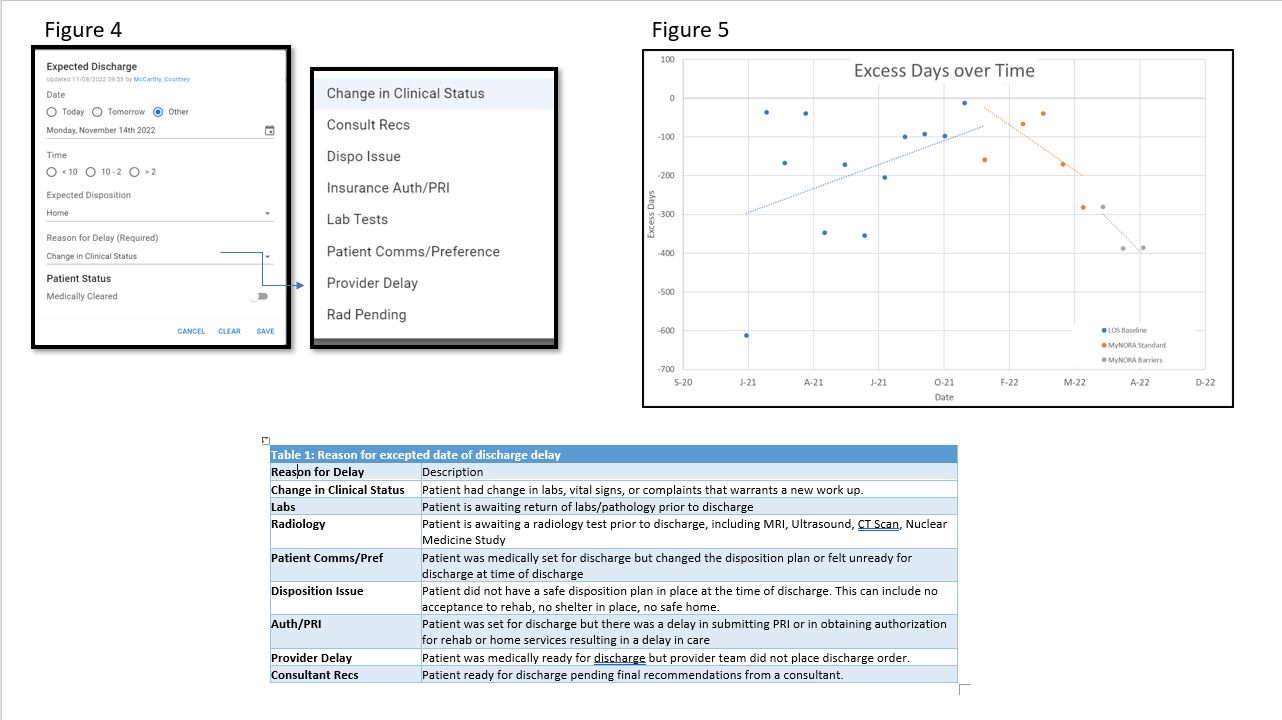Background: To date, there are limited reports around the use of well-designed information technology tools to enhance communication during interdisciplinary rounds (IDRs). Computer supported cooperative work (CSCW) is a field that studies the integration of information technology into the workflow of healthcare teams. In collaboration with our technology innovations center, we developed a Microsoft Teams IDR tool known as “MyNora.” MyNora is an automated process-oriented tool that extracts summary information from the electronic health record. This platform centralizes large amounts of data into a user-friendly interface with convenient remote access capabilities. In a year-long pilot, we demonstrate how CSCW has impacted our workflow and improved efficiencies and throughput.
Purpose: Our primary goal was to implement MyNora to improve the quality and efficiency of communication during IDRs. Our secondary goal was to utilize MyNora to optimize throughput by a) entering an expected discharge date for each patient and b) identifying discharge barriers. Improved communication and early identification of barriers had promising effects on our throughput metrics.
Description: The MyNora pilot started in November 2021; the application was introduced to 8 inpatient IDRs across two tertiary academic medical centers within our organization. The MyNora user interface includes active diagnoses, vital signs, medications, laboratory/radiographic results and pending tests (Figure 1). MyNora also retrieves daily progress notes and updated consultant recommendations. With this information, the IDR team can quickly identify the plan of care for each patient without navigating through multiple sections of the EMR. This rounding tool has added to efficient conversations and immediate discussions around patient care. We also leveraged MyNora to focus on throughput. We made it an expectation to enter an expected discharge date for each patient on the unit. By day 2 of admission, most of our inpatients had an expected discharge date entered. This date served as an important target to synchronize all IDR members to complete tasks at hand by the expected discharge. Interestingly, we found that around half of our patients were leaving on or before the expected discharge date and the remaining half experienced delayed discharges (Figures 2 and 3). To better understand the discharge barriers, we designed MyNora to capture these barriers in real time. If the expected date of discharge was not met, a reason was entered into the application from one of seven options (Table 1). Preliminary throughput metrics show a decline in excess days and average length of stay on units that utilize MyNora compared to units that do not (Figure 5).
Conclusions: There is increased satisfaction among IDR team members since the implementation of MyNora. Tools such as MyNora highlight the positive impact that CSCW may have on communication and hospital throughput. MyNora also created a mechanism for accountability across different members of the team. Our future studies will include research involving pre and post survey data on user satisfaction with the application. We also aim to analyze specific discharge barriers that contribute to our highest lengths of stay. Our next phase will integrate other departments i.e. radiology, consultants, etc. to the use of MyNora. Though technology will never replace human touch and reasoning, innovative tools such as MyNora can support a collaborative workforce and drive efficient health care delivery.


